If the motive is to pander, not find adventure, the music will be worthless
If you’re faced with a problem, you fix it through the scientific method. You come up with a number of possible solutions, test them against reality, pick the ones that succeed — looping through a few times to refine them so they’re accurate — and use those. You throw away the ones that did not work.
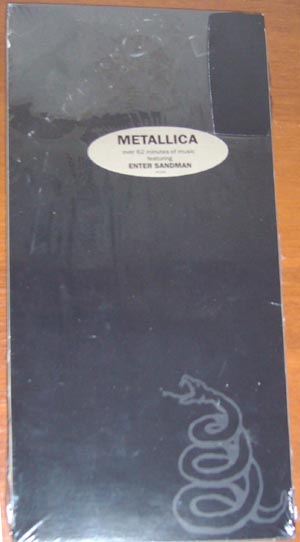 Our universe is mathematically stable because it has something (reality) to test solutions against, and because it allows the discarding of bad solutions. This avoids a state of entropy, or a condition where every solution possible has about the same effectiveness. Entropy afflicts everything we do through a type of organizational decay, but when it becomes the state of a situation, all motion and change ceases. Heat death, or the lack of motion to energy and hence its dissipation, occurs.
Our universe is mathematically stable because it has something (reality) to test solutions against, and because it allows the discarding of bad solutions. This avoids a state of entropy, or a condition where every solution possible has about the same effectiveness. Entropy afflicts everything we do through a type of organizational decay, but when it becomes the state of a situation, all motion and change ceases. Heat death, or the lack of motion to energy and hence its dissipation, occurs.
This information logic to our world underlies natural selection just as much as it describes how our brains work. Imagine multiple ideas; pick the ones that converge; throw out the rest. In the case of heavy metal music, we strengthen the genre when we as fans pick only the best bands and albums. We weaken it when we tolerate mediocre metal, because then being mediocre is just about as important as being good, so people stop trying to be good — heat death.
While heat death is comforting because it enables us to avoid challenging ourselves, and to feel like we’re heroes and geniuses for recording any metal music, it means that we no longer have great metal music — the kind that makes you sit up, pay attention, and rediscover life through a worship of power, saying a kind of cosmic yes (in the James Joyce sense) to accepting life as constant conflict for a few rare, beautiful possible outcomes.
For those who still have red blood coursing through their veins and so aren’t so afraid of failure that they’re unwilling to try, it’s imperative to pick good metal music. This means not making the categorical mistake of buying an album just because the band that made it was good once, or because that band is trendy, has some novel implementation like flutes and tubas, or because you know the people in the band and you want to make them happy. It’s important to know when to stop listening and throw out the bad ideas.
What makes music bad?
Bad music is all the same. Most bands record music that is competent but fails to articulate anything that makes us sit up and take notice, because they’re either repeating the past or suggesting something unrealistic, which means we cannot feel that sense of the music being vital to our lives because we have to live in reality. At least 99% of music falls into this category, but perhaps more, because out of tens of thousands of metal bands, only a few hundred stand the test of time.
In that mindset, we can see that what makes “bad metal” is not that it’s unmusical, or stupid, except in a few cases. In most cases, it is simply unremarkable because it hasn’t challenged itself to find meaning in life and sing about it. This is why almost all reviews of albums that are destined to fail go like this:
This CD recombines past methods that worked, without knowledge of the reasons why they worked. Quirky as a result, it is a unique collage of instruments and techniques. Yet it is without direction because it imitates the effects of the past without knowing the causes, like someone looking into the genre from outside. Therefore, it’s not bad, but not great, and so we’ll forget it soon because time is valuable and this CD is not going to make us feel a sense of connection to life through power.
In other words, the CD is bringing us to a state of entropy. It isn’t bad, it isn’t good, which means by default that it’s not good. You will see this review format on many metal sites. It usually looks like this:
I don’t normally like ultra-brutal death metal, but this CD combines ultra-brutal death metal with hardcore vocals and black metal riffs. I have never before heard a flute used to make brutal riffs come slamming home. Guitar solos are like fire in the veins of a poisoned dragon. Although it’s really brutal, parts of this CD are riff salad where they get confused about whether they are black metal or death metal. But the end result isn’t bad, even if it won’t make my top ten for this year. If you really like brutal death metal with flutes, get this CD.
That’s a review done by a fan, a zine, or another band. What does it look like when we combine the art of making people think they should buy something — marketing — with this review type?
Brutal death metal fans have waited too long for a real masterpiece, but [ name redacted ] is going to change all that. With pummeling brutal riffs, you might think this band were closed-minded, but they have a full-time flute player who brings a progressive, liberal touch to the old and musty genre of brutal death metal. This groundbreaking act goes where no metal band has gone before! Don’t expect mercy from these powerful slamming riffs. This CD is brutal and it’ll tear your fuckin head off!
In the above, you will see something all smart marketers do. They find an audience for something, and then try to convince them that a product is better than others. If you can’t sell it on “better,” you sell it on novelty. It’s unique. It does something others don’t do. What you really want to do is avoid mentioning whether or not this is important. For example, who cares if a band uses a flute if their music is just as boring as if they did not?
What is pandering?
Most people will recognize, after hearing enough music, that while good music is made to be bought, it isn’t designed so that it will make the most money by offering the least challenging listen. If you’re not listening to radio pop, it’s because you got tired of melodic hooks and three-minute songs using verse-chorus structures. The riffs in such songs may be good, but since they achieve a state and cycle in it, but don’t really change, it’s hard to call them art — or claim they’ll inspire our lives. They’re like pretty wallpaper or television shows: background noise to make life pleasant, not give it meaning.
What separates good music from bad music is what separates scientific information from marketing: marketing is designed to appeal to a need that’s already there, and exploit it as a way of making money. Where good music/art is designed to make life more meaningful by showing us a new vision of it, marketing is designed to affirm our current vision of life so we can fit a product into it. Marketing panders. Art doesn’t.
Pandering – We use the panda image to suggest that music panders, and so has not only suspect motivations but minimal joy in listening. You may think this is sorta neat for a couple weeks, but then you’ll forget it. In the meantime, the band and others like them will start making more of this crap, so that instead of getting albums you can listen to for years, you’ll get lots of new albums you have to buy that won’t really satisfy you.
Selling Out – When a band goes from having made quality music to a state of extreme pandering, we realize that a psychological change has occurred in the artists. Instead of trying to make good music so that they can make money, they bypass the middle step and make music that makes money not because it’s good, but because it panders. We use the tombstone image to suggest that this band has left the reservation and headed for pop territory, so we’re not going to bother reviewing any of their other stuff until this changes.
Why so judgmental? — you are trained to ask. Why not just write about the music as it is? The answer is that mediocre music far outnumbers good music, and we are interested in preserving the good, and so instead of leaving you wondering about why we stopped reviewing a band, we’re just going to point out that they have changed motivation and results. It’s no different from reviewing every metal album ever made, and writing the generic review above 99% of the time and not telling you that there’s something all bad albums have in common.
You’re also trained to ask: Who made you the judge? Who are you to decide? — these questions are illogical. In a relative universe, we all decide, and our value is decided by the decisions we make, although it takes someone who has a clue to see that. Who made you the judge to decide we’re not the judge? Who are you to decide who is to decide? These questions make light of how ridiculous those common questions are.
If you want to know why a band’s CD or performance is referred to this page, it is because the above is the best that can be said about it, and we do not wish to be ironic or condescending to you, our reader. We are here to praise the art in the genre and its best incarnations, and we treat you and the artists with greater respect by having such reverence for the art.
What Makes Good Metal?
Metal is Romantic art, much as the novel Frankenstein or the opera Parsifal are: discovery of transcendent meaning in life by embracing its struggle and suffering as means to a higher end, an idea beyond material satisfaction or fear. To those who see the greatness of this idea, it is a worldview and a life-philosophy, and metal is one of its voices.
When we say metal expresses this idea, we are speaking only secondarily of imagery and lyrics (which mainstream academics prefer to study because they’re easy). We speak of the music and the spirit it evokes. Much like songs can convey sadness, fear, anger or hope, like the leitmotifs of Wagner different impulses are encoded in metal music that together suggest a Romantic worldview.
As art, heavy metal music is unique among popular genres for this viewpoint. What makes sonic art “metal” is its expression of this spirit more than any dogma or musical conceits; after all, other bands have appropriated metal riffs for years but without grasping this idea, much like innumerable Hollywood soundtracks have borrowed from Wagner without capturing his ideal.
When a metal band ceases to make Romantic art and becomes another voice for the easy, non-transcendent answers of life — material comfort, self-satiation, revengeful morality or simply self-obsession — it is no longer metal, but an imitation of metal, much like advertising jingles often “sound like” a genre without having its artistry or ideas.
No Comments













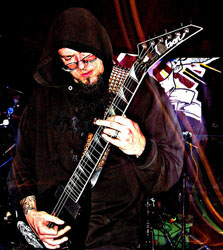 Ritual Killer is a side project of Goatwhore axeman Sammy Duet, though few people are aware of this so the band was obligated to stand on its own merits. They attacked a set of songs that were one part Hellhammer and two parts Blasphemy, and while the band delivered a competent show (the dreadlocked and visibly disturbed vocalist added an enigmatic touch to the proceedings) the songs quickly ran together and monotony set in. However, they seemed aware of the limited range of their material and the thirty minute set prevented them from overstaying their welcome. They were not bad by any means, but also not nuanced enough to make any lasting impact. If the band ever moves out of side project status they may end up with more to offer. Once again this reviewer stepped outside to breathe dry air and to avoid Book of Black Earth, a band who describes themselves as “death grunge” and may quickly realize that this label reads to most people as, “ignore us, we’re not credible”. This is precisely what happened; there was no reason for this band to be on the tour.
Ritual Killer is a side project of Goatwhore axeman Sammy Duet, though few people are aware of this so the band was obligated to stand on its own merits. They attacked a set of songs that were one part Hellhammer and two parts Blasphemy, and while the band delivered a competent show (the dreadlocked and visibly disturbed vocalist added an enigmatic touch to the proceedings) the songs quickly ran together and monotony set in. However, they seemed aware of the limited range of their material and the thirty minute set prevented them from overstaying their welcome. They were not bad by any means, but also not nuanced enough to make any lasting impact. If the band ever moves out of side project status they may end up with more to offer. Once again this reviewer stepped outside to breathe dry air and to avoid Book of Black Earth, a band who describes themselves as “death grunge” and may quickly realize that this label reads to most people as, “ignore us, we’re not credible”. This is precisely what happened; there was no reason for this band to be on the tour.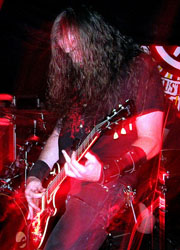
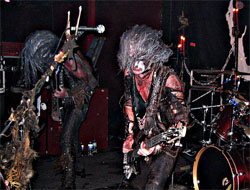 Watain was preceded by the orange funk of carrion that was hung on iron poles around the stage like some kind of perverse holiday display. A synth-orchestrated introduction brought them to an enthusiastic crowd, and then the band voraciously tore into their set. The sound was a bit anemic and the band’s musical dynamic was stripped down due to their regular second guitarist being barred from entering the US, but it was a solid execution of material predominantly from “Sworn to the Dark” with tracks from “Casus Luciferi” and a single number from “Rabid Death’s Curse” to mollify the purists. Vocalist and de facto bassist E. Watain was appropriately the center of attention with his deranged and snake-eyed countenance that is just as charismatic as it is confrontational. He is not a large man so it is always impressive to hear a such gigantic voice rising out of him. He also seemed to be speaking in tongues or perhaps reciting incantations while not on the microphone, and it helped further the sense of madness on the stage. Watain’s latest album has been derided by some as too polished and too accessible, and while these charges aren’t wholly unfair it should be noted that the band has refused to give way to brevity in their compositions; most of the songs clock in at around six minutes and as such they are allowed to build and breathe to greater effect. One of the highlights was their rendition of “I Am the Earth”, which best summarizes Watain as a whole. Grandeur, violence, and passion are all equally present in this song, and the only thing that comes close to touching it is the current album’s “Stellarvore”, which also made its massive presence known this night. Ultimately, the Swedish quartet succeeded in their mission by living up to their infamous reputation along with creating many new converts to their cause. Music aside, they deliver some of the most dangerous showmanship since an odd young man named Per Ohlin took up with a death metal band from Oslo.
Watain was preceded by the orange funk of carrion that was hung on iron poles around the stage like some kind of perverse holiday display. A synth-orchestrated introduction brought them to an enthusiastic crowd, and then the band voraciously tore into their set. The sound was a bit anemic and the band’s musical dynamic was stripped down due to their regular second guitarist being barred from entering the US, but it was a solid execution of material predominantly from “Sworn to the Dark” with tracks from “Casus Luciferi” and a single number from “Rabid Death’s Curse” to mollify the purists. Vocalist and de facto bassist E. Watain was appropriately the center of attention with his deranged and snake-eyed countenance that is just as charismatic as it is confrontational. He is not a large man so it is always impressive to hear a such gigantic voice rising out of him. He also seemed to be speaking in tongues or perhaps reciting incantations while not on the microphone, and it helped further the sense of madness on the stage. Watain’s latest album has been derided by some as too polished and too accessible, and while these charges aren’t wholly unfair it should be noted that the band has refused to give way to brevity in their compositions; most of the songs clock in at around six minutes and as such they are allowed to build and breathe to greater effect. One of the highlights was their rendition of “I Am the Earth”, which best summarizes Watain as a whole. Grandeur, violence, and passion are all equally present in this song, and the only thing that comes close to touching it is the current album’s “Stellarvore”, which also made its massive presence known this night. Ultimately, the Swedish quartet succeeded in their mission by living up to their infamous reputation along with creating many new converts to their cause. Music aside, they deliver some of the most dangerous showmanship since an odd young man named Per Ohlin took up with a death metal band from Oslo.
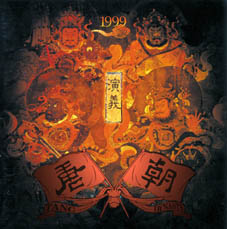 In your view, is “protest music” a limiting term, and does it apply to heavy metal in any way?
In your view, is “protest music” a limiting term, and does it apply to heavy metal in any way?

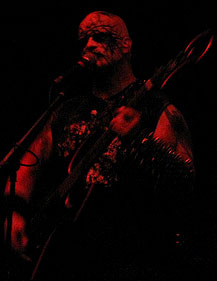 The phrase “welcome to hell” would be a sentiment fitting for the night in two ways- one positive and one negative. The negative, of course, was the journey to every scenester weekend hippie’s favorite city – that pit of insincerity and neurotic dysfunction known as Austin, Texas. The positive meaning was the sets conjured up by Averse Sefira and, to a lesser extent, Nodens, who brought a much less earthly hell to Austin that night, a Hell of black and true evil, an evil of passion ferocity, as opposed to the grey, human hell that was the surroundings of the club.
The phrase “welcome to hell” would be a sentiment fitting for the night in two ways- one positive and one negative. The negative, of course, was the journey to every scenester weekend hippie’s favorite city – that pit of insincerity and neurotic dysfunction known as Austin, Texas. The positive meaning was the sets conjured up by Averse Sefira and, to a lesser extent, Nodens, who brought a much less earthly hell to Austin that night, a Hell of black and true evil, an evil of passion ferocity, as opposed to the grey, human hell that was the surroundings of the club.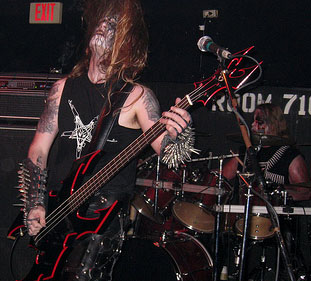 After some tear-down and set up, the lights dimmed, an ambient piece began to play, and the most anticipated band of the night took the stage, adorned in corpse paint and spikes. The ambient intro faded, and Averse Sefira wasted no time in tearing into what is likely going to be their signature song in a year or two, “Vomitorium Angelis”. The band proceeded to play an eight-song set culled from their most recent two albums, that showcased the violent and intolerant as well as the triumphant and joyful, and even the radiantly beautiful through use of high-speed dissonant melodic riffing over a pounding and precise percussion which was contrasted with the more playful right-hand rhythms provided by Sanguine Mapsama on guitar. Rather than enslaving himself to the “on the beat” tremolo-pick like many black metal guitarists do, Sanguine approached rhythm, with the touch of a jazz musician, using the beat as a guideline that could be deviated from when needed to give his riffs much more life- the best example of this came in the build down before the explosion in “Detonation”, which showed him lightly and sensitively playing at low volume, with little distortion, throwing in improvised arpeggios and improvising the details of the rhythm in the larger framework, making this passage far more effective than it is on album. Smaller examples of this rhythmic freedom were found throughout the night, and made this performance far more effective than the album versions of the songs. The glue that held the freedom of Sanguine’s guitar and the oppression of The Carcass’s battery together was Wrath’s bass, which followed The Carcass’s rhythm, but Sanguine’s melodies, thus creating a unifying factor between the two otherwise seemingly disparate elements.
After some tear-down and set up, the lights dimmed, an ambient piece began to play, and the most anticipated band of the night took the stage, adorned in corpse paint and spikes. The ambient intro faded, and Averse Sefira wasted no time in tearing into what is likely going to be their signature song in a year or two, “Vomitorium Angelis”. The band proceeded to play an eight-song set culled from their most recent two albums, that showcased the violent and intolerant as well as the triumphant and joyful, and even the radiantly beautiful through use of high-speed dissonant melodic riffing over a pounding and precise percussion which was contrasted with the more playful right-hand rhythms provided by Sanguine Mapsama on guitar. Rather than enslaving himself to the “on the beat” tremolo-pick like many black metal guitarists do, Sanguine approached rhythm, with the touch of a jazz musician, using the beat as a guideline that could be deviated from when needed to give his riffs much more life- the best example of this came in the build down before the explosion in “Detonation”, which showed him lightly and sensitively playing at low volume, with little distortion, throwing in improvised arpeggios and improvising the details of the rhythm in the larger framework, making this passage far more effective than it is on album. Smaller examples of this rhythmic freedom were found throughout the night, and made this performance far more effective than the album versions of the songs. The glue that held the freedom of Sanguine’s guitar and the oppression of The Carcass’s battery together was Wrath’s bass, which followed The Carcass’s rhythm, but Sanguine’s melodies, thus creating a unifying factor between the two otherwise seemingly disparate elements.
